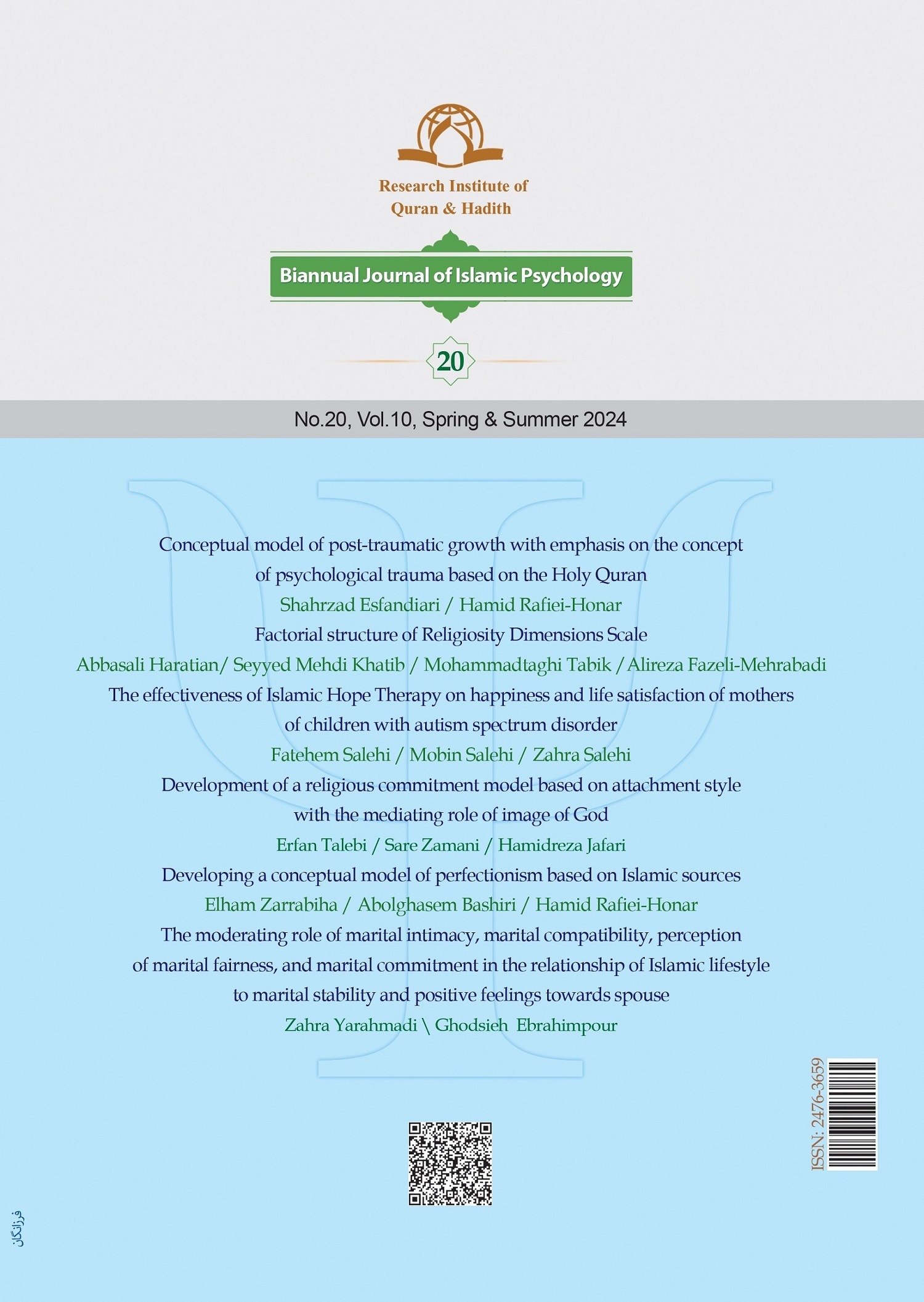Document Type : Scientific-research article
Authors
1
Assistant Professor at the Department of Family, Research Institute of Hawzah and University, Qom, Iran
2
Assistant Professor at the Department of Psychology, Research Institute of Quran and Hadith, Qom, Iran
3
Assistant Professor at the Department of Psychology, University of Quran and Hadith, Qom, Iran
4
Assistant Professor, Faculty of Behavioral Sciences and Mental Health (Tehran Psychiatry Institute), Iran University of Medical Sciences, Tehran, Iran
Abstract
The current research was aimed to identify the factor structure and psychometric properties of the Religiosity Dimensions Scale. This descriptive research is one of correlation type. The statistical sample was 1429 people; students of the Islamic Azad University of Qom and the University of Qom and the clients of the Good Start Protocol were selected by Convenience Sampling. They responded to Scales of Religious Orientation (Third version) and Religiosity Dimensions Scale. The data were analyzed by Pearson correlation, split-half method, and exploratory and confirmatory factor analyses. Findings showed that the Religiosity Dimensions Scale had seven factors: religious behavioral coping, religious cognitive-emotional coping, religious motivation, religious centrality, spiritual experience and communication, intrapersonal struggles, and divine struggles. Cronbach's alpha of .96 and good fit of the model indicate good reliability and correlation .8 of this scale with the scale of religious orientation shows the good validity of this scale. Based on the findings of the research, it can be said that this scale has high reliability and validity and consistent factors are obtained from it, which can be used to examine the religiosity dimensions of people, and to use it in clinical and research activities.
Keywords
